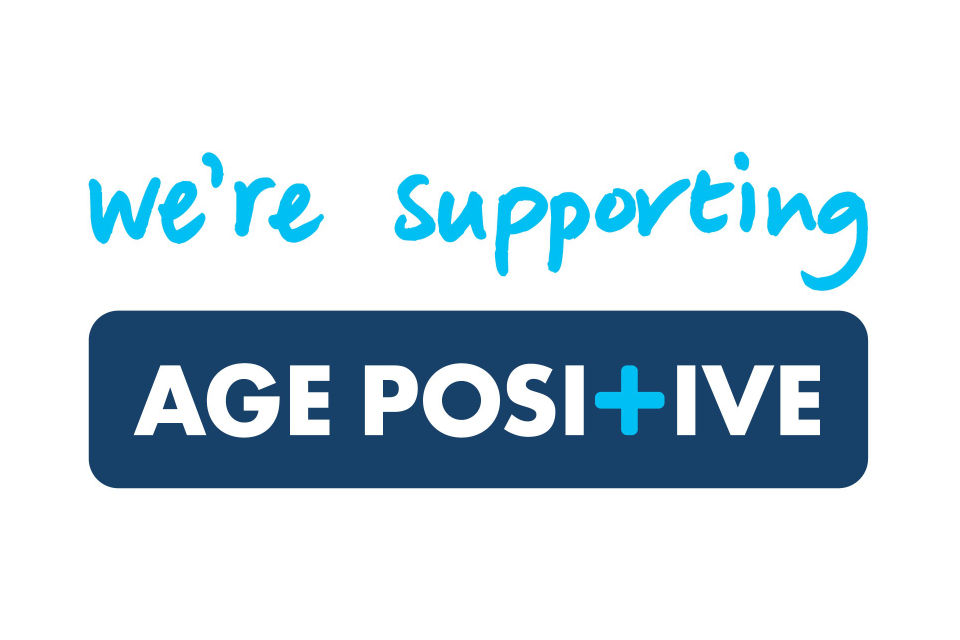
In an era of global demographic transformation, where ageing populations are becoming increasingly prevalent, the challenge of sustaining a productive workforce has gained prominence. Prolonging the employment of older workers has become a crucial aspect of maintaining economic vitality and ensuring the well-being of individuals. This article explores strategies to empower and motivate older workers to continue contributing to the workforce for longer durations, with a focus on data and research from Sweden, Switzerland, Germany, the UK, and the US.
The Changing Landscape of Aging and Employment
The World Health Organization (WHO) indicates that the global proportion of people aged 60 and above is expected to nearly double by 2050 [1]. As societies age, fostering an environment where older individuals can actively participate in the workforce is imperative. Research suggests that promoting extended workforce participation among older adults brings economic benefits and enhances the overall quality of life for individuals [2].
The global proportion of people aged 60 and above is expected to nearly double by 2050
Understanding the Dynamics in Selected Countries
Sweden
Sweden has been at the forefront of implementing policies that encourage extended workforce participation. The Swedish government has introduced flexible work arrangements, lifelong learning programs, and initiatives promoting age-inclusive workplaces. Research from the Swedish Institute for Social Research highlights that these measures contribute to high employment rates among older individuals [3].
A key aspect of Sweden’s strategy is the high participation rate of older individuals in the workforce. A study published on PubMed investigated workforce participation in Sweden among older employees before and after changes in eligibility for sickness absence and unemployment compensation by a social insurance reform. It was found that the total proportion of individuals aged 55-64 in the workforce increased between 2004 and 2011. Notably, the increase was primarily in professions with lower educational requirements, lower salaries, and predominantly occupied by women.
The proportion of individuals taking an early pension increased in Sweden
In contrast, men in professions requiring higher education more often exited working life with an early statutory pension and employment pension. The study concluded that the change in regulations seems to have contributed to an overall shrinking proportion of individuals within the sickness benefit and disability pension schemes, while the proportion of individuals taking an early pension increased [4].
Moreover, Sweden has made significant strides in addressing the skill mismatch in its labor market through funding for retraining and lifelong learning. A new agreement adopted in 2021 aims to make the Swedish labor market more flexible, with significant funding for continuous professional development (CPD) and retraining for workers. This includes study grants corresponding to 80% of a person’s annual salary for CPD or retraining, which can be used to strengthen their position in the labor market. This reform also benefits workers who have been employed for eight years or longer, with an estimated cost for the fully developed retraining and CPD program until 2026 being around SEK 11 billion per year [5].
Switzerland
In Switzerland, the approach involves a combination of employer-led initiatives and government support. Flexible work hours, age-diverse teams, and retraining programs are key components. Swiss research, such as that from the University of Zurich, emphasises the positive correlation between workplace flexibility and older workers’ job satisfaction and commitment [6].
The employers’ organisation in Switzerland recommends adapting human resources strategies to the older workforce.
A key element in Switzerland’s approach is the focus on flexibility and the recognition of the value of older workers. As noted by SWI swissinfo.ch, there’s an ongoing debate over the financial future of the country’s pension scheme and an expected shortage of workers. The employers’ organisation in Switzerland has emphasised the need for greater flexibility in addressing the country’s ageing workforce. It recommends adapting human resources strategies to the older workforce, which includes improving career counseling, introducing a flexible retirement age and part-time work, and offering further training while preserving and developing the specific skills of older workers [7].
One of the key government-supported initiatives is the supported employment program for job seekers aged 50 or over, which has been in trial from 2021 to 2024. This program targets individuals who are about to lose their unemployment benefits, offering support for up to 18 months. It distinguishes itself from conventional labor market measures by its voluntary nature and the involvement of job coaches who assist participants in their job search and even after they have started a new role. These coaches also play a critical role in facilitating retraining where necessary, and employers may receive financial allowances for the induction or on-the-job training of these older employees.
The Swiss model also recognises the value of older workers’ experience and motivation. Participants in the supported employment program specifically apply for jobs where their profiles match the job requirements, ensuring a high degree of fit and efficiency in the recruitment process. This focus on the professional profiles of older workers and their alignment with labor market opportunities is a key element of the Swiss approach [8].
Germany
Germany’s approach to addressing the needs of its aging workforce, known as “demographic management,” involves a combination of policies aimed at creating a conducive work environment for older employees. This strategy is essential considering that Germany is one of only five “super-aged” societies globally, with its population aged 65 and older projected to reach nearly one-third of the total population by 2050 [9].
To increase labor force participation among older adults, the German government has implemented various training and education programs, as well as retirement system reforms. These efforts are crucial as Germany’s older adult labor force participation rate, though currently low, is growing rapidly. This increase is set against the backdrop of the “baby boom” generation reaching retirement age, which is expected to accelerate the reduction of the labor force. The government’s initiatives include raising the pensionable age and introducing flexible retirement options, along with programs aimed at providing employment opportunities, education, and training, to improve workplace conditions for older employees.
The labor force participation rate among Germans age 65 and older grew from 3.4% to 6.1% between 2005 and 2015, though it is still considerably lower than the OECD average of 14.1%. Today, older Germans’ labor force participation is below those of all countries observed in this study.
Additionally, the German government has been actively involved in supporting older adults within their workplaces through the Federal Initiative New Quality of Work (INQA). Since 2002, the Federal Ministry for Employment and Social Affairs has dedicated resources and funding to improve work quality and sustainability, particularly for older adults. INQA collaborates with firms to develop and utilise human resources in a manner that accommodates the needs of older adults. This includes promoting foresight in training needs within companies, establishing lifelong learning activities, encouraging knowledge exchange among workers of different generations, and generally advocating for diversity management and inclusivity. INQA’s goal is to assist approximately 4,000 employers and 2 million employees, with a special focus on small and medium-sized enterprises (SMEs) which constitute 99.5% of all enterprises in Germany and often have limited HR capacity [10].
United Kingdom

The United Kingdom has recognised the economic advantages of an aging workforce and implemented several measures to promote age diversity in the workplace. The Age Positive campaign, initiated by the Department for Work and Pensions (DWP), is a notable example of these efforts. This initiative brings together research and information from employers on effectively managing an aging workforce of all generations. It includes guides for employers on issues concerning recruitment, performance, succession management, retention, and transfer of skills. These resources offer practical solutions tested by various sectors and sizes of employers, aiming to challenge age stereotypes and promote age diversity [11].
The Centre for Ageing Better in the UK has also conducted research that emphasises the importance of creating supportive organisational cultures that value the skills and experience of older workers. Their Good Recruitment for Older Workers (GROW) project focuses on reducing age bias and discrimination in the recruitment process. This research is particularly timely given the dramatic changes in the job market due to COVID-19, new technology, and Brexit. Their findings suggest that a significant proportion of older individuals feel at a disadvantage when applying for jobs due to their age, indicating that ageism is the least scrutinised and most widely accepted form of discrimination in the UK. The Centre for Ageing Better’s research aims to build an evidence base to inform new approaches to recruitment that are more inclusive of older workers [12].
United States
In the US, where the aging workforce is a growing demographic, companies are increasingly adopting age-friendly practices. The Stanford Center on Longevity highlights the significance of lifelong learning programs, phased retirement options, and mentorship initiatives. Such practices not only enhance the skills of older workers but also foster a sense of purpose and engagement [13].
To support this demographic, employers are implementing various workplace practices that benefit all workers and make good business sense. These include initiatives for postsecondary education and training, which are increasingly important for older job seekers’ reemployment. However, challenges exist in accessing and completing education due to age-related disabilities.
Initiatives are crucial in retaining the talents of skilled, experienced mature workers.
Resources such as the Employer Assistance and Resource Network on Disability Inclusion (EARN) highlight the advantages of stay-at-work and return-to-work programs. These programs discuss successful retention strategies and help employers decide which strategies will work in their organisations. These initiatives are crucial in retaining the talents of skilled, experienced mature workers, including those who develop disabilities as they age or have existing disabilities that become more significant.
Furthermore, reports emphasise the importance of making work more flexible, particularly for older workers. Flexibility can benefit workers of all ages, but for older workers, it often involves special considerations, such as phased retirement options. These options allow employees to reduce work time in their current jobs, encouraging hard-to-replace, experienced workers to postpone leaving the labor force. Phased retirement is seen as one strategy among others to retain skilled workers aged 50 and over, aligning with the need for appealing work arrangements in today’s marketplace [14].
Strategies for Prolonging Workforce Participation
1. Lifelong Learning Initiatives
Implementing continuous learning programs to upskill older workers and keep them abreast of technological advancements.
2. Flexible Work Arrangements
Providing options such as part-time work, job-sharing, and telecommuting to accommodate the diverse needs of older employees.
3. Health and Wellness Programs
Investing in initiatives that promote the physical and mental well-being of older workers, thereby enhancing their ability to remain in the workforce.
4. Age-Inclusive Organisational Cultures
Fostering an environment that values diversity and experience, challenging age-related stereotypes, and promoting intergenerational collaboration.
5. Phased Retirement Options
Offering flexible retirement transition plans that allow older workers to gradually reduce their work hours while maintaining a sense of contribution.
The Junoverse Opinion
As the world grapples with the challenges posed by aging populations, implementing strategies to empower and motivate older workers is not only a societal responsibility but also a strategic imperative. Drawing insights from countries like Sweden, Switzerland, Germany, the UK, and the US, it is evident that a combination of policy measures, organisational practices, and cultural shifts can create an environment where older individuals are not just encouraged but are actively motivated to contribute to the workforce for longer durations.
References:
[1] World Health Organization. (2022). Ageing and Health.
[6] University of Zurich. (2022). Flexibility Is Good for Older Workers.
[7] Swissinfo. (2022). Swiss pension reforms continue unabated.
[9] German Institute for Employment Research. (2022). Age-appropriate Work Design.
[10] AARP International. (2019). The Aging Readiness & Competitiveness Report.
[11] United Kingdom Department of Work & Pensions. (2013). Management of an ageing workforce.
[12] Centre for Ageing Better. (2022). Good Recruitment for Older Workers (GROW).
[13] Stanford Center on Longevity. (2022). The New Map of Life.
[14] U.S. Department of Labor. (2022). Older Workers.

